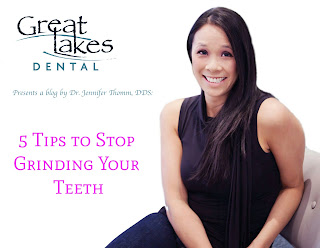Although most people grind their
teeth from time-to-time, occasional grinding doesn’t normally cause harm. But
when grinding starts to occur on a regular basis (often when we sleep), it can
develop into a serious medical issue (referred to as: Bruxism). Symptoms of Bruxism
can include damage to your teeth, poor sleep patterns, headaches and soreness
in your face and neck.
For many people, they’re not even
aware that they grind. Telltale symptoms can include waking up with a dull
headache or a sore jaw. In many cases, people learn about their grinding from
loved ones who hear it at night.
The condition can become problematic
and result in fracturing, loosening or loss of teeth. Grinding can also affect
your jaw, cause TMJ (Temporomandibular Joint Disorders), or even change the
appearance of your face.
What Can Be Done?
For adults, custom Night Guards are effective
at preventing damage. Night guards are designed to prevent muscle tension and
withstand the intense pressure exerted by tooth grinders.
Other tips include:
- Avoiding alcohol. Studies show that grinding intensifies after alcohol consumption.
- Cutting back on foods containing caffeine (especially close to bed-time).
- Relaxing your jaw muscles at night by holding a warm washcloth against your jaw muscles.
- Train yourself not to clench. If you notice your doing it throughout the day, work towards breaking that habit.
- Lastly, don’t chew pencils, pens or anything that isn’t food. These activities promote clenching which can lead to grinding.
519.542.3427






